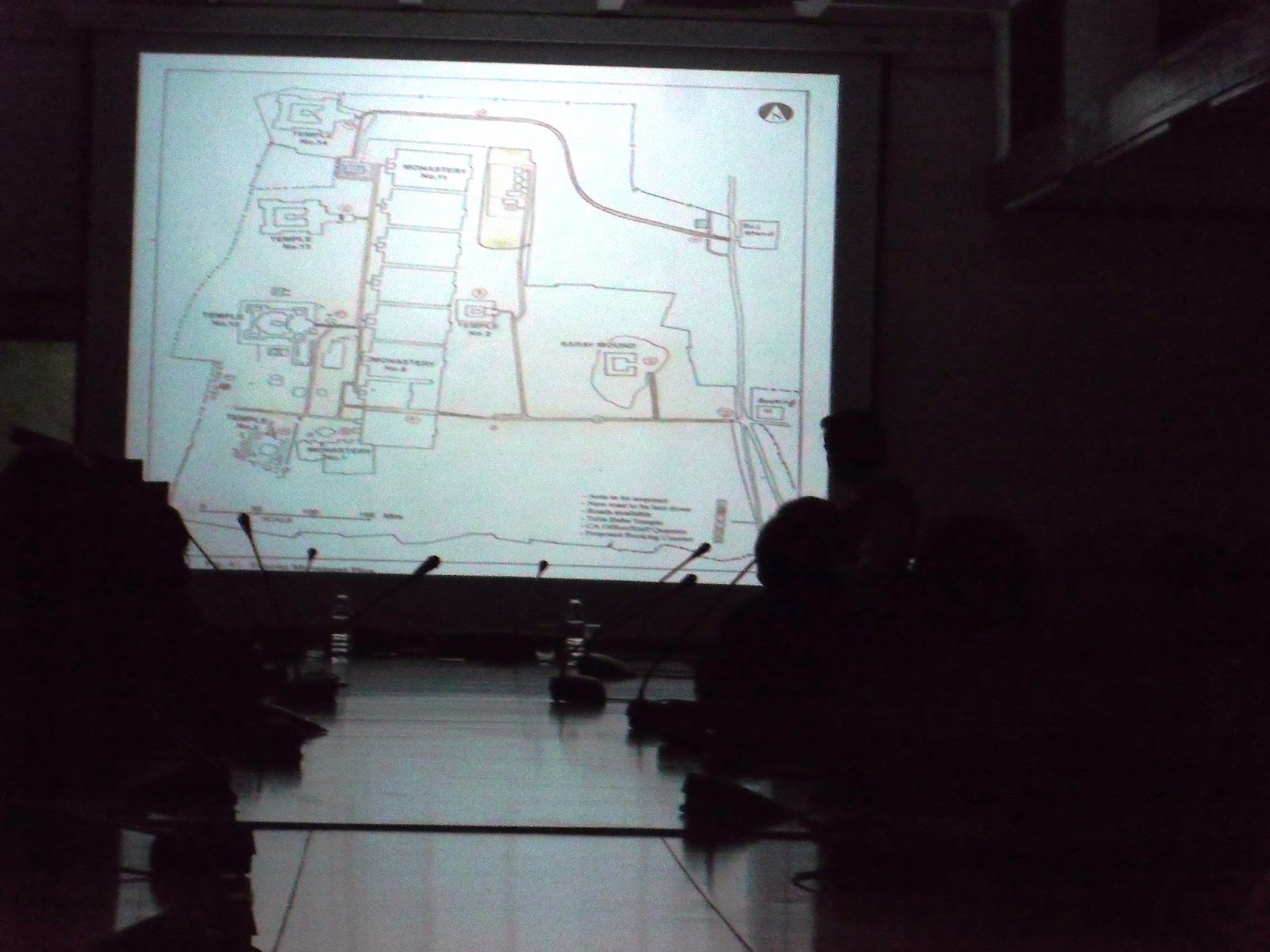Whenever people asked me what's next on my bucket list, I would think of many destinations but never did I thought about 'Bihar' (State of India).. But after attending an inspiring discourse by ASI's Regional Director (retd.), Mr. K.K. Muhammed on the 'History of Buddhism through the Archaeological Excavations in various parts of Bihar
and UP', organised by India International Center on Feb 1, my perception about Bihar transformed completely..
Archaeologist Mr Muhammed displays a picture of a mound which contained a very important stupa
He, during the discourse, spoke about how he and his team conducted successful excavations and conservation projects in areas like Nalanda, Vikramshila, Vaishali, Kesaria, Rajgir and Sarnath (M.P.), the challenges faced by ASI like removing human settlement over possible archaeological sites (as in the case of Vaishali and Nalanda), building of religious monuments over historical sites, e.t.c.
Site Map of the 1400 year old Nalanda University
Mr Muhammed (who headed the Patna Circle of the ASI) shared with us anecdotes (apparently the half buried Ashokan Pillar of ancient Vaishali was used by a farmer to tie his cattle), his personal experiences while dealing with government apathy (apparently the Indian Railways was insisting to build a railway line over a mound which later turned out contain a 1400 year old stupa, Mr Muhammad had to start excavating the site without legal permission to unearth the stupa and foil the Railways' archaeologically disastrous plan).
Mr Muhammed displays the progress of excavations over the Kesariya stupa, the highest in the world
Observe a 150 years old pic (behind the speaker) of the mound which covered the ruins of Nalanda University
Mr Muhammed showed rare pictures taken by British archaeologists of the mounds which contained the ruins of the Nalanda University and really old pictures of mounds containing the stupa's of Kusinagar, Vikramshila University, Rajgir, Kesariya e.t.c.
Portrait of famous Chinese traveler and monk Hsuan Tsang
Picture Source - Wikipedia
He also described the immense value Chinese traveler Hsuan Tsang's (above) (who visited India during the 7th century) journals had for Indian archaeologists and historians. Many significant stupas were located with the help of his journals as all other records were lost.
Archaeologist Mr K. K. Muhammed
After this discourse it became clear to me that it would not be entirely fair to criticise the ASI for not conserving monuments as (in the words of Mr Muhammed) the government does not realise the fact that building 5 star hotels would not boost tourism.. Conserving monuments and archaeological treasures would..
















0 comments:
Post a Comment